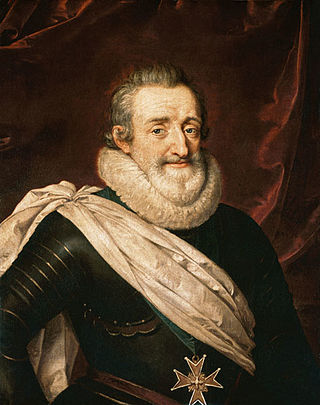
The Edict of Nantes was signed in April 1598 by King Henry IV and granted the minority Calvinist Protestants of France, also known as Huguenots, substantial rights in the nation, which was predominantly Catholic.

The Huguenots were a religious group of French Protestants who held to the Reformed (Calvinist) tradition of Protestantism. The term, which may be derived from the name of a Swiss political leader, the Genevan burgomaster Besançon Hugues (1491–1532), was in common use by the mid-16th century. Huguenot was frequently used in reference to those of the Reformed Church of France from the time of the Protestant Reformation. By contrast, the Protestant populations of eastern France, in Alsace, Moselle, and Montbéliard, were mainly Lutherans.

Louis XIII was King of France from 1610 until his death in 1643 and King of Navarre from 1610 to 1620, when the crown of Navarre was merged with the French crown.
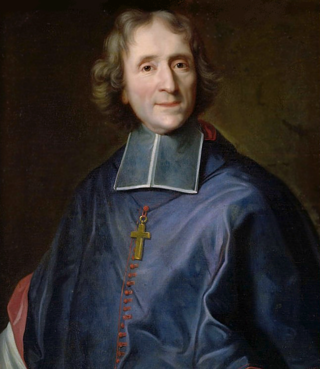
François de Salignac de la Mothe-Fénelon, PSS, more commonly known as François Fénelon, was a French Catholic archbishop, theologian, poet and writer. Today, he is remembered mostly as the author of The Adventures of Telemachus, first published in 1699. He was a member of the Sulpician Fathers.

The Nine Years' War, was a European great power conflict from 1688 to 1697 between France and the Grand Alliance. Although largely concentrated in Europe, fighting spread to colonial possessions in the Americas, India, and West Africa. Related conflicts include the Williamite war in Ireland, and King William's War in North America.
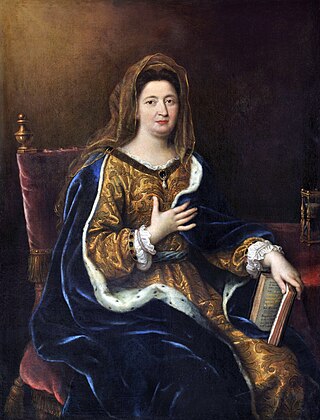
Françoise d'Aubigné, known first as Madame Scarron and subsequently as Madame de Maintenon, was a French noblewoman and the second wife of Louis XIV of France from 1683 until his death in 1715. Although she was never considered queen of France, as the marriage was carried out in secret, Madame de Maintenon had considerable political influence as one of the King's closest advisers and the governess of the royal children.
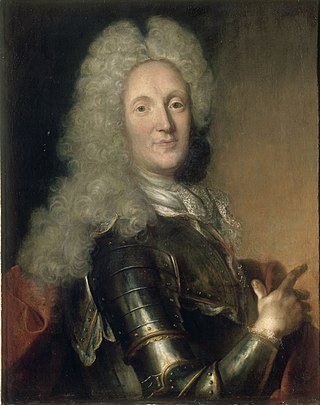
Nicolas Catinat was a French military commander and Marshal of France under Louis XIV.

The Vicomte of Bragelonne: Ten Years Later is a novel by Alexandre Dumas. It is the third and last of The d'Artagnan Romances, following The Three Musketeers and Twenty Years After. It appeared first in serial form between 1847 and 1850.

The Edict of Fontainebleau was an edict issued by French King Louis XIV and is also known as the Revocation of the Edict of Nantes. The Edict of Nantes (1598) had granted Huguenots the right to practice their religion without state persecution. Protestants had lost their independence in places of refuge under Cardinal Richelieu on account of their supposed insubordination, but they continued to live in comparative security and political contentment. From the outset, religious toleration in France had been a royal, rather than popular, policy.

The Dragonnades were a French government policy instituted by King Louis XIV in 1681 to intimidate Huguenot (Protestant) families into converting to Catholicism. This involved the billeting of ill-disciplined dragoons in Protestant households with implied permission to abuse the inhabitants and destroy or steal their possessions. The soldiers employed in this role were satirized as "missionary dragoons".
The Great Cipher was a nomenclator cipher developed by the Rossignols, several generations of whom served the French monarchs as cryptographers. The Great Cipher was so named because of its excellence and because it was reputed to be unbreakable.

The Battle of Staffarda took place on 18 August 1690 during the Nine Years' War in Piedmont, Northern Italy. The engagement was the first major battle of the Nine Years' War in Italy since Victor Amadeus II of Savoy joined the Grand Alliance against Louis XIV of France earlier that year.

The siege of Cuneo was fought on 28 June 1691 during Nine Years' War in Piedmont-Savoy, modern-day northern Italy. The siege was part of French King Louis XIV’s campaign against Victor Amadeus, the Duke of Savoy, who had sided with the Grand Alliance the previous year. The siege was an attempt to gain a foothold on the Piedmont Plain, thus ensuring Marshal Catinat's army could winter east of the Alps. Yet due to the incompetence of the two French commanders – and a timely arrival of Imperial reinforcements – the siege proved a disaster, resulting in the loss of between 700 and 800 men. Although French forces had taken Nice in the west, and Montmélian in the north, Catinat's small, ill-equipped army was forced onto the defensive. Louis XIV subsequently offered Amadeus generous peace terms but the Duke, who had by now received substantial Imperial reinforcements from the Empire, considered himself strong enough to continue hostilities.
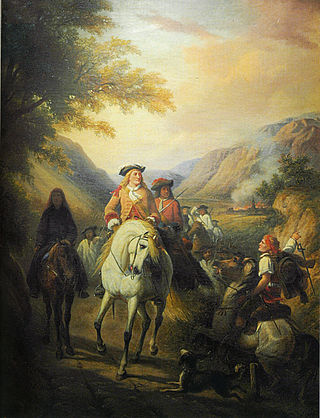
The War of the Camisards or the Cévennes War was an uprising of Protestant peasants known as Camisards in the Cévennes and Languedoc during the reign of Louis XIV. The uprising was a response to the Edict of Fountainebleu in 1685.

The Battle of Chiari was fought on 1 September 1701 during the War of the Spanish Succession. The engagement was part of Prince Eugene of Savoy's campaign to seize the Spanish controlled Duchy of Milan in the Italian peninsula, and had followed his victory over Marshal Catinat at the Battle of Carpi in July. Marshal Villeroi replaced Catinat as commander of the Franco–Spanish–Savoyard forces in the theatre, carrying with him orders from King Louis XIV to push the Imperialists out of Italy.
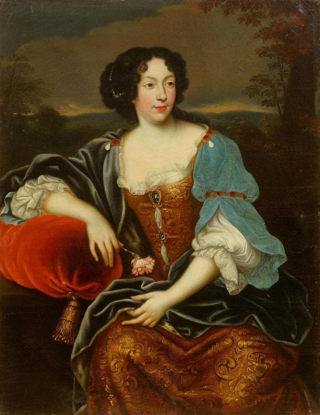
Élisabeth Marguerite d'Orléans, known as Isabelle d'Orléans, was the Duchess of Alençon and, during her husband's lifetime, Duchess of Angoulême. She was a daughter of Gaston d'Orléans and a first cousin of Louis XIV of France. She has no descendants today. She was suo jure Duchess of Alençon and Angoulême.
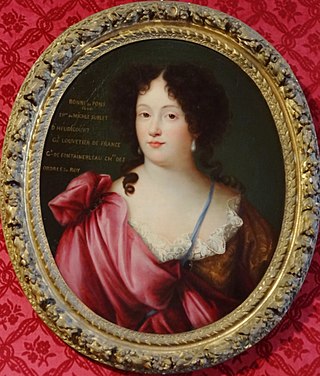
Bonne de Pons d'Heudicourt, was a French courtier, known as the royal mistress of Louis XIV of France. She was known as La Grande Louve after her husband, who was the king's official Master of the Wolf Hunt.
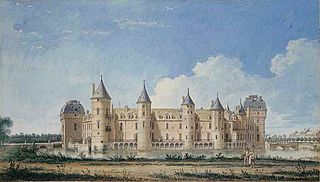
Vidame de Chartres was a title in the French nobility. There are a few vidame titles in France, of which that of Chartres is probably the best known, because a number of holders have been notable in widely different ways over the centuries. Vidame was originally the name for the commander of a bishop's military force in the Early Middle Ages, when bishops, like other great lords, needed troops for security. The title eventually developed into a heritable noble title, like others linked to a specific estate. The title therefore passed to the new owner when the estate was sold, as happened a number of times in this case.
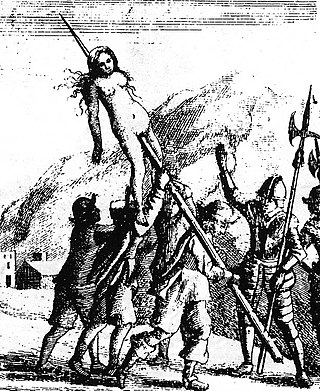
The Savoyard–Waldensian wars were a series of conflicts between the community of Waldensians and the Savoyard troops in the Duchy of Savoy from 1655 to 1690. The Piedmontese Easter in 1655 sparked the conflict. It was largely a period of persecution of the Waldensian Church, rather than a military conflict. Joshua Janavel (1617–1690) was one of the Waldensian military leaders against the Savoyard ducal troops.
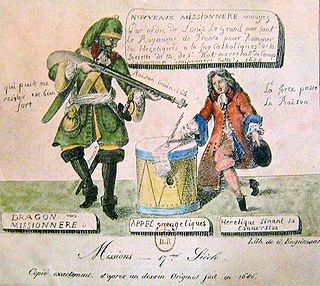
Events from the year 1681 in France



















